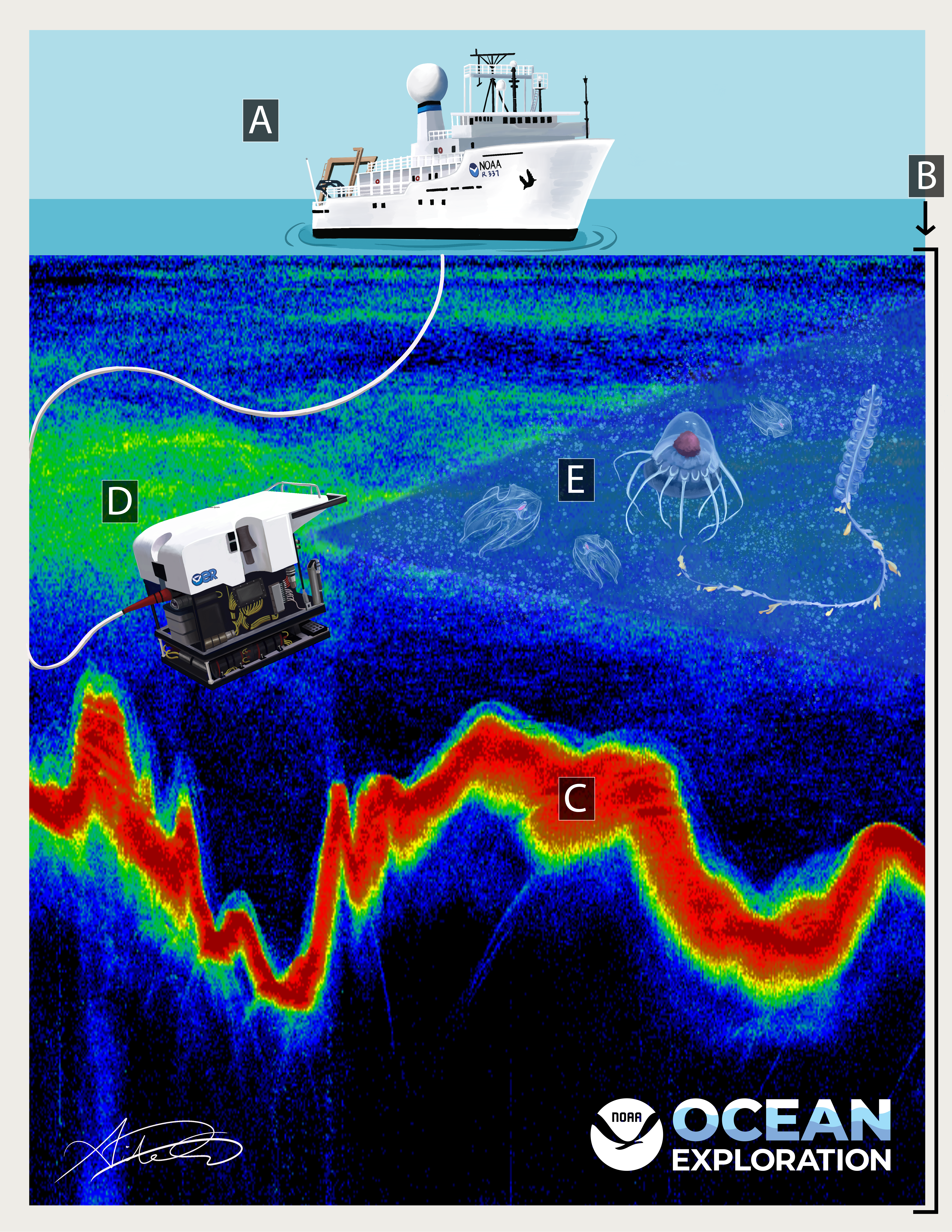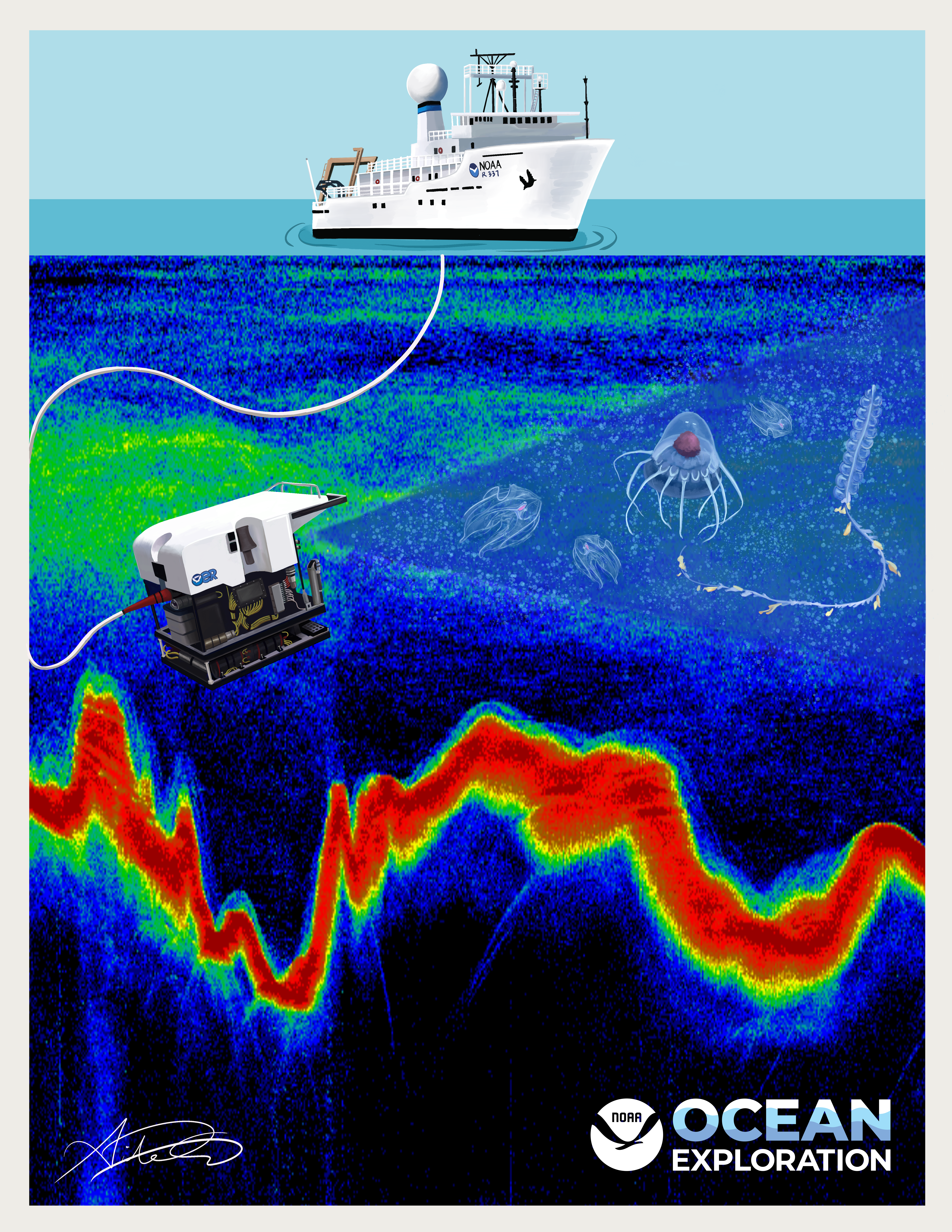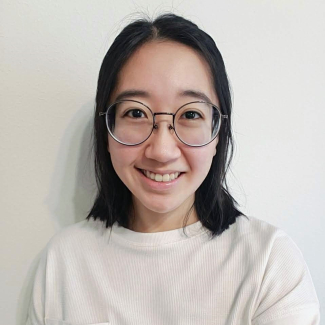Hi! I’m Anika Cho, a 2022 Hollings scholar. For my Hollings internship, I worked with NOAA Ocean Exploration to investigate the water column fauna of Hydrographer Canyon, a submarine canyon in the Northwest Atlantic Ocean. I used multi-frequency acoustic backscatter data and video footage taken by an ROV (remotely operated vehicle) to conduct a biological survey of the canyon. Individually, neither of these methods gives us the full picture — they compliment and inform each other. Read why below, and view the poster I designed to represent this idea visually.
What we learn from acoustic data and ROV video footage
Acoustic data gives scientists a broad view of how organisms are distributed throughout the water column but can’t easily discern which individual species are present. It’s also difficult to acoustically detect gelatinous organisms, like jellyfish and comb jellies, because their density and composition are similar to seawater. ROVs can dive down and zoom in on individual organisms (including jellies), allowing for species-level identification. However, they can only survey one small area at a time. Each surveying method provides a different kind of information, so it’s important to use a variety of tools and technologies when exploring the ocean.
My poster
I designed a poster to represent this idea using Echoview data processing software and the digital painting app Procreate. Each letter on the poster indicates a different concept that’s happening above and under the water. See the key below the poster to match the concept with its visual representation. If you want to see the original poster without the letters, just click the arrow next to the poster.


- The NOAA Okeanos Explorer research vessel, which is equipped with echosounders that collect acoustic backscatter data.
- Under the Okeanos Explorer is an echogram of Hydrographer Canyon, generated and filtered using the acoustic data processing software Echoview. Within the echogram, you can see:
- A strong backscattering response at the seafloor showing the bathymetry of the canyon (red).
- A dense layer of organisms in the midwater that is known as the Deep Scattering Layer (green).
- The headlights of the ROV Deep Discoverer reveal specific gelatinous organisms within this scattering layer. I drew some of my favorite jellies from the Hydrographer Canyon ROV Dive, including Bathocyroe fosteri ctenophores (comb jellies), which were the most abundant species observed.

Anika is a 2022 Hollings scholar studying electrical engineering and physics at the University of Alabama.



